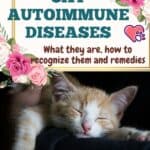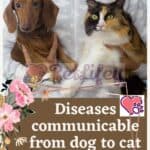
Of course, you want your little companion to stay healthy. But illness and injury cannot always be avoided . In order for your hamster to live as long as possible, ensure it has a healthy life.
Symptoms of illness
- Apathy, lack of appetite, weight loss.
- Sudden change in behavior.
- Stiff and prostrate attitude when seated.
- Salivation associated with a lack of weight.
- Dull and tousled coat.
- Hair loss, areas of bare skin.
- Inflammation of the eyes and ears.
- Sneezing.
- Diarrhea (behind soiled).
- Constipation (infrequent poop).
- Tremors, tetany.
- Snoring breathing.
- Bumps, balls.
- Belly swollen and hard.
- Injuries.
Cold (Hamster Disease)
When the cage is exposed to drafts or large changes in temperature, the hamster can catch a cold, which results in discharge and sneezing. But be careful: “a simple” cold can quickly turn into very dangerous pneumonia. Snoring breathing indicates that the affection is progressing. See the vet immediately.
Bite injuries (Hamster Disease)
Most of the time, they result from poorly tolerated group life and are often located on the animal’s rump. You can clean small wounds yourself with an antiseptic . You can also apply a healing ointment, but sometimes the animal licks it off. However, severe or festering wounds should be treated by the veterinarian. Remember to separate rivals without delay and ensure a peaceful lonely life for them.
Gastrointestinal disorders (Hamster Disease)
Diarrhea can be the result of inadequate nutrition, but also stress or a bacterial infection. Feed the patient grains and rusks, and give up fresh food until the poop becomes firm again . If possible, clean the soiled anal area. Make sure he drinks and doesn’t get dehydrated . If diarrhea persists for more than a day, see the vet.
Conjunctivitis (Hamster Disease)
Conjunctivitis is caused by drafts, germs and wounds. Often the hay also causes inflammation which can quickly get worse. If the condition does not stop, ask the vet to prescribe eye drops. The inflammation should stop after a few days . Do not wash your eyes with chamomile tea, it makes things worse.
Kerato Conjunctivitis (Hamster Disease)
At first, this condition presents the same symptoms as conjunctivitis, but they are followed by severe dryness of the eye. This disease must be treated by the veterinarian, as the animal risks losing its eye.
Parasites (Hamster Disease)
Does your little companion scratch frequently? Look for parasites. Bloodsuckers such as ticks, mites or lice can make her life difficult. In contrast, fleas are rare in hamsters, but the danger of infestation exists when a dog, cat or rabbit lives in the home.
A parasitic infestation results in violent and lasting itching. The coat becomes dull and disheveled and can sometimes fall off entirely. The hamster is particularly agitated, it scratches itself often and violently, sometimes until blood. Parasites are not trivial, but a problem to be taken seriously and which must be treated by the vet with an insecticide. It is essential to follow your prescription scrupulously, because these preparations are toxic and should only be used exceptionally.
Note its weight : If your hamster loses more than 5-7g in a week, show it to the vet right away. The reverse is also true: if his weight increases markedly, put the foot on the fat. The goal is not for him to look like a soft toy. Cut down on fatty foods such as mealworms, walnuts and hazelnuts, sunflower or squash seeds.
Wet tail disease (Hamster Disease)
This disease mainly affects young people up to the second month. It is characterized by a wet caudal area and diarrhea. It can follow a descent of the rectum. The condition is usually caused by stress (separation from the mother, new environment, etc.), which affects the intestinal flora. The bacteria then play well and multiply rapidly. Colibacillosis develops. If your hamster is showing symptoms of this disease, see the vet immediately. Your small animal may die within 48 hours.
Full cheekbones (Hamster Disease)
Your hamster still has full cheekbones? Something is wrong. He might not be able to empty them on his own anymore . Only the vet can help him. This problem is often caused by sticky foods, mainly sweets. These have no place in his diet.
When it comes across a candy, the hamster nibbles it without delay. Make sure your kids don’t give it to her. But it could also be a dental problem or an inflammation of the cheekbones. In case of oral infection, the vet will empty the cheekbones himself and spray them with an antibiotic.
Dental problems (Hamster Disease)
A hamster’s incisors grow throughout his life, which is why he must always have something to gnaw on in order to wear them down. This wear results from the chewing movements of all the teeth. It is not the harshness of the food that counts, but the time the animal spends chewing. The longer it gnaws, the better the teeth wear .
Teeth that are too long can cause serious problems if the hamster does not have enough to gnaw or if it is not eating enough due to illness. Sudden weight loss can indicate a dental problem . The animal eats less because of the pain. In the worst case, he may starve if you don’t intervene in time. Teeth that are too long should be seen by a veterinarian, who will shorten them. Also regularly check the position of the teeth.
Important : A congenital dental malocclusion always leads to dental problems, there is nothing else to do than treat it regularly.
Sialite (Hamster Disease)
It is a viral infection of the salivary glands . It can paralyze the animal. It is not directly curable, but the vet can strengthen your rodent’s immune defenses.
Heatstroke (Hamster Disease)
Hamsters do not sweat and their temperature can rise quickly. Exposed to too high temperatures or to full sun, they can be the victim of heat stroke. They should be spared temperatures above 25 ° C.
In summer, it is difficult to avoid higher temperatures. You can then use the following trick: spread a damp cloth (but not soaked) on the cage, or have the cooling pads (out of reach of his teeth). Symptoms of heat stroke are listlessness, tremors, and rapid breathing. Immediately put the animal in the shade and refresh it with a slightly wet (but not soaked) handkerchief. Get him to the vet quickly.
Diabetes (Hamster Disease)
It is especially the dwarf hamsters, in particular the Campbells, which suffer from diabetes; other species are less prone to it. Possible symptoms: the animal drinks and urinates abundantly, the urine often has a sweetish or pungent odor. Although the hamster eats more, it loses weight. He is very active. The possible sequelae are cataracts or infection of the urinary tract or bladder. If you suspect diabetes, see the vet. Diabetes is incurable and has a negative impact on life expectancy , but the right treatment will allow the animal to live happily for the time it has left.
Mycosis (Hamster Disease)
Yeast infections are not to be taken lightly. Because they are zoonoses, that is to say that they are transmissible to humans . It also works the other way around: if you have a yeast infection on your skin, for example, your hamster might catch it. In hamsters, a mycosis first appears on the head (muzzle, eyes, ears) and legs. Then the fungus spreads all over the body, the skin becomes scaly, the hamster scratches itself frequently, the hairs fall out in the affected places. At the first symptoms, consult the veterinarian. Disinfect your hands after each contact with the animal and its utensils (bowls, bottle, etc.) to avoid contagion.
Lymphocytic choriomeningitis (CML) (Hamster Disease)
This condition of the central nervous system is quite rare and only affects young people up to the third month. The vectors of the disease are generally mice . The symptoms resemble those of a common cold, often associated with conjunctivitis. More rarely, there are cramps and paralysis.
Caution is required, as CML is also a zoonosis – therefore transmissible to humans. If you have a hamster less than three months old and you seem to have serious flu with pain in your bones, see your doctor.
CML can be treated well – in humans and animals alike – and complications are rare. However, pregnant women should avoid contact with a hamster showing flu-like symptoms. CML can lead to miscarriage.
Hamster diseases caused by treatment errors are harmless to humans. The same is not true for Infectious diseases which can be transmitted to the hamster from other animals. Lymphocytic choriomeningitis (CML), for example, is an epidemic disease that only affects young golden hamsters. It has never been observed in the dwarf hamster before. The animal loses weight, always wants to sleep, its coat ruffles and concomitant conjunctivitis make it hypersensitive to light.
After three weeks, the animal has usually overcome the disease. This can be transmitted to humans, most often takes only the benign aspect of a mild flu, only very rarely developing malignantly.
Important: pregnant women are strongly advised not to take care of young hamsters, as this meningitis could cause premature childbirth or malformations of the fetus. If the hamster has been living in the household for a long time, and if it is more than five months old, there is no danger.
Species protected against CML: if you want to ensure maximum safety when buying your hamster, ask the seller for a species protected against CML. Unfortunately, these are not found everywhere.
Tumors (Hamster Disease)
Hamsters often have tumors, but these are not malignant. They can appear anywhere on the animal’s body, including the cheekbones. At first, you can feel the tumor like a small lump under your fingers . But it grows rapidly and can take on significant proportions. The vet will decide if an ablation is necessary. The operation represents a considerable risk, because the general anesthesia is very trying for these small animals. The vet’s decision will depend on the general condition and age of the hamster.







